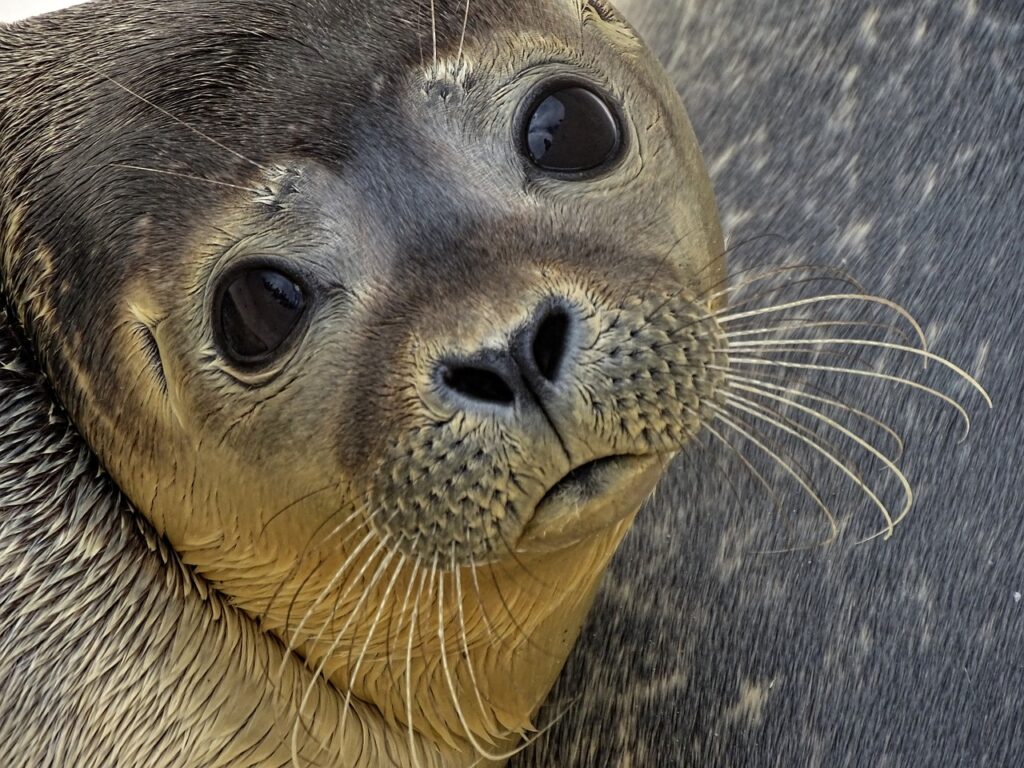So you’ve just brought home a new turtle and you’re excited to introduce it to its new tank and watch it settle into its new environment. But before you do that, have you considered the importance of quarantine procedures? Just like with any new pet, it’s crucial to implement a quarantine period for new turtles to ensure their health and safety, as well as the well-being of any other turtles you may already have. Taking this precautionary step can help prevent the spread of diseases, parasites, and other potential health issues, ultimately allowing your new turtle to thrive in its new home.
Why Quarantine Procedures are Important
When it comes to caring for new turtles, quarantine procedures are essential. Not only do they help prevent the spread of diseases, but they also allow for the identification and treatment of potential health issues. Additionally, quarantine helps minimize stress and provides the necessary adaptation time for the turtles to adjust to their new environment. By following proper quarantine procedures, you can ensure the long-term health and well-being of your turtles.
Preventing the Spread of Diseases
One of the key reasons why quarantine procedures are important is to prevent the spread of diseases. New turtles may carry various pathogens that can be harmful to their tank mates. By isolating them in a separate quarantine area, you can closely monitor their health and prevent the transmission of any potential illnesses to other turtles in your collection. This not only protects the existing turtles but also ensures the health and safety of the new arrivals.
Identifying and Treating Health Issues
Quarantine procedures provide a crucial opportunity to identify and treat any health issues that new turtles may have. During the quarantine period, you can carefully observe their behavior, monitor their feeding habits, and conduct regular health checks. This enables you to detect any signs of illness or abnormalities early on, allowing for prompt treatment and preventing the escalation of health problems. Identifying and addressing health issues during quarantine can greatly improve the chances of a successful and healthy transition into their new habitat.
Minimizing Stress and Adaptation Time
Moving to a new environment can be extremely stressful for turtles. Quarantine procedures give them the necessary time to adapt to their new surroundings. By providing a separate area for them to acclimate to their new environment, you can minimize stress and ease their transition. Turtles can take time to adjust to changes in temperature, lighting, and even the presence of other turtles. Allowing them this adjustment period helps prevent health issues that can arise from stress and ensures a smoother transition into their permanent home.
Setting Up the Quarantine Area
Creating the right environment for quarantine is crucial to the success of the procedure. Here are some important considerations when setting up the quarantine area for new turtles.
Choosing the Right Location
When selecting a location for your quarantine area, it’s important to choose a space that is separate from your main turtle habitat. This helps ensure minimal contact between the new turtles and any existing ones, reducing the risk of disease transmission. The quarantine area should also be equipped with proper ventilation and lighting to provide a comfortable and healthy environment for the turtles.
Creating an Ideal Environment
In order to create an ideal environment for your quarantined turtles, it’s important to replicate their natural habitat as closely as possible. This includes providing appropriate temperature and humidity levels, as well as ample hiding spots and basking areas. Research the specific needs of the turtle species you are caring for and tailor the environment accordingly. By creating a suitable environment, you can help reduce stress and promote the overall well-being of the turtles during their quarantine period.
Essential Equipment and Supplies
Equipping the quarantine area with the right equipment and supplies is crucial for proper care. Some essential items include tanks or enclosures of appropriate size, heating and lighting fixtures, water filtration systems, and thermometers to monitor temperature. It’s also important to have a quarantine kit ready, which may include items such as nets, water conditioners, food, and any necessary medications. Having all the necessary equipment and supplies on hand ensures that you can provide the best possible care for your quarantined turtles.

Quarantine Duration and Observation
The duration of the quarantine period is an important factor to consider. Here’s why a minimum quarantine period is crucial and what aspects you should observe during this time.
The Importance of a Minimum Quarantine Period
A minimum quarantine period is essential to allow for proper observation and to safeguard against the potential transmission of diseases to other turtles. The length of the quarantine period may vary depending on factors such as the species of the turtle and the potential health risks associated with the individual or group. Generally, a minimum quarantine period of 30 to 90 days is recommended. This allows enough time to thoroughly assess the turtles’ health and behavior before introducing them to other turtles.
Daily Observations and Health Checks
During quarantine, it is important to conduct daily observations and health checks on the turtles. This includes monitoring their appetite, activity levels, and overall behavior. Look for any signs of distress, such as lethargy, lack of appetite, or abnormal swimming patterns. Regularly inspect their shells, skin, and eyes for any signs of infection or injury. If any concerns arise, consult a veterinarian who specializes in reptiles for further evaluation and guidance.
Monitoring Feeding and Behavior
Another important aspect of quarantine is monitoring the turtles’ feeding habits and behavior. Take note of their appetite and make sure they are consuming an appropriate diet for their species. Consider offering a variety of foods to ensure balanced nutrition. Observe their behavior during feeding, noting any issues with swallowing or regurgitation. By closely monitoring their feeding and behavior, you can identify any potential health problems or preferences that may require special attention or adjustment.
Proper Handling and Care during Quarantine
Proper handling and care during quarantine are crucial to minimize stress and ensure the well-being of the turtles. Here are some techniques and considerations to keep in mind.
Handling Techniques to Minimize Stress
When handling turtles during quarantine, it’s important to use gentle and proper techniques to minimize stress. Avoid excessive handling or disturbances, as this can cause unnecessary stress and potentially injure the turtles. Use a gentle touch and support their body properly to avoid any strain or accidents. If you need to move them, use a suitable container or net to safely transport them without causing harm. Minimizing stress during handling helps promote a positive environment for the turtles to recover and adapt.
Feeding and Nutrition Considerations
Proper feeding and nutrition play a critical role in the health and recovery of quarantined turtles. Research the specific dietary requirements of the turtle species you are caring for and provide a well-balanced diet accordingly. Fresh and clean water should always be available for drinking and soaking. It’s important to ensure that the turtles are receiving the necessary nutrients for their overall health and immune system support. Consult with a veterinarian or reptile nutrition specialist for specific dietary recommendations.
Maintaining Cleanliness in the Quarantine Area
Maintaining cleanliness in the quarantine area is essential to prevent the spread of diseases and maintain a healthy environment for the turtles. Regularly clean and disinfect the tanks, filters, and any other equipment used in the quarantine area. Remove any uneaten or spoiled food promptly to prevent bacterial growth. Regular water changes and proper filtration are also crucial for maintaining water quality. Cleanliness is vital to prevent the turtles from getting sick and allows for a better chance of a successful transition into their permanent habitat.

Using Quarantine to Integrate with Other Turtles
Quarantine can also be used as a tool for successfully integrating new turtles with existing ones. Here are some techniques and considerations to follow for a smooth integration process.
Gradual Introduction to Other Turtles
When it’s time to integrate the quarantined turtles with the existing ones, it is important to do so gradually. This ensures that the new turtles are not overwhelmed or subjected to territorial disputes. Start by introducing them to each other in a controlled environment, such as a separate tank or enclosure within the main habitat. Monitor their interactions closely to ensure there is no aggression or bullying. Gradually increase the time they spend together until they are comfortable being in the same space for extended periods.
Monitoring and Supervision during Integration
During the integration process, it is crucial to closely monitor and supervise the turtles. Keep a close eye on their behavior, feeding habits, and overall well-being. Observe for any signs of aggression, stress, or social hierarchy issues. If any concerns arise, consider temporarily separating the turtles and consulting an expert for guidance. By maintaining adequate supervision, you can address any potential issues early on and prevent any harm to the turtles.
Red Flags and Separation if Necessary
If any red flags or signs of aggression are observed during the integration process, it may be necessary to separate the turtles for their own safety and well-being. Aggressive behaviors or injuries can jeopardize the health of all the turtles involved. In such cases, consult with an expert or a veterinarian specialized in reptiles to determine the best course of action. Separation and red flags may indicate that more time is needed in quarantine or that the turtles may not be compatible for cohabitation.
Quarantine Procedures for Specific Turtle Species
Different turtle species may have various health risks and specific care requirements. Here’s why it is important to understand the species-specific needs and tailor quarantine conditions accordingly.
Understanding Specific Health Risks
Each turtle species has its own set of potential health risks and vulnerabilities. Some species may be more prone to certain diseases or infections, while others may have particular dietary needs or environmental requirements. Understanding the specific health risks associated with the species you are caring for is crucial in providing appropriate care during quarantine and beyond. Research their typical health issues and consult with experts to ensure you are well-prepared to address any potential concerns.
Tailoring Quarantine Conditions
Quarantine conditions should be tailored to meet the specific needs of the turtle species. This includes adjusting temperature, humidity, lighting, and diet to match their natural habitat as closely as possible. Some species may require specific water parameters, while others may benefit from additional UVB lighting or specific types of basking spots. By tailoring the quarantine conditions to the species, you can optimize their health and well-being during the quarantine period.
Vet Consultation and Customized Care
Working closely with a veterinarian who specializes in reptiles is highly recommended when caring for specific turtle species during quarantine. A veterinarian can provide expert guidance and customize care plans based on the individual needs of the turtles. They can perform thorough health assessments, recommend appropriate medications or treatments, and provide valuable advice on providing optimal care throughout the quarantine period. Regular veterinary consultations ensure that all possible health issues are addressed and that the turtles receive the best possible care.

Quarantine Documentation and Record-Keeping
Documenting and keeping records of quarantine procedures is essential for tracking the health and progress of the turtles. Here’s why it is important and what information should be included.
Logging Observations and Health Checks
Keeping a detailed log of observations and health checks during quarantine is important for tracking the progress of the turtles. Include information such as their weight, appetite, behavior, and any notable observations or concerns. Regularly update the log to keep a record of their overall well-being and any changes in their condition. This documentation can be valuable in assessing their health and ensuring that they receive the appropriate care and treatment.
Documenting Medication and Treatment
If any medications or treatments are administered during quarantine, it is crucial to document them accurately. Record the name of the medication, dosage, frequency, and any specific instructions or reactions observed. This information is important for future reference and provides valuable data for potential consultants or veterinarians who may need to review the turtles’ medical history. Accurate documentation of medications and treatments is essential for optimal care and prevents potential complications.
Sharing Information with Experts or Rescues
In some cases, sharing quarantine documentation and records with experts or rescues may be beneficial. This is particularly important if the turtles were acquired from a rescue organization or if you seek assistance or advice from turtle experts. Sharing the documentation allows them to gain a better understanding of the turtles’ history, health, and any ongoing concerns. It also provides a comprehensive overview of the care provided, allowing for more accurate advice or potential collaborations.
The Risks of Skipping Quarantine Procedures
Skipping quarantine procedures can have serious consequences for both new and existing turtles. Here are the risks involved when quarantine is disregarded.
Spreading Diseases to Other Turtles
Without proper quarantine, new turtles may introduce diseases or infections to the existing population. This can quickly spread and jeopardize the health and well-being of all the turtles in the habitat. Infectious diseases can devastate a turtle population, leading to severe illness and even death. By skipping quarantine procedures, you increase the risk of exposing healthy turtles to potentially harmful pathogens.
Compromising the Health of New Turtles
Newly acquired turtles may already be carrying diseases, parasites, or other health issues. Without proper quarantine and observation, these conditions can worsen and compromise their overall health. By skipping quarantine, you may unintentionally subject the turtles to unnecessary stress or expose them to potential hazards in their new environment. Quarantine provides the necessary time and attention for identifying and addressing any health issues promptly.
Long-Term Impacts on the Turtle Population
Skipping quarantine procedures can have long-term impacts on the overall turtle population. By introducing infected or unhealthy turtles to an existing habitat, you risk spreading diseases that can affect the population for years to come. Additionally, skipping quarantine prevents the opportunity to observe and address any potential genetic or health issues that may arise. Proper quarantine procedures are vital for maintaining the long-term health and sustainability of turtle populations.

Case Studies: Success Stories with Quarantine
Quarantine procedures have been proven essential through numerous success stories. Here are some examples of how quarantine has saved turtles’ lives and the lessons learned from these real-life situations.
Examples of Quarantine Saving New Turtles’ Lives
In various cases, the implementation of proper quarantine procedures has been crucial in saving turtles’ lives. By identifying and treating diseases or infections during quarantine, turtles have been able to recover and thrive in their new environment. Quarantine has also helped prevent the spread of diseases, protecting the existing turtle populations from potential outbreaks. These success stories serve as a reminder of the importance of following thorough quarantine procedures.
Lessons Learned from Real-Life Situations
Real-life situations have highlighted specific challenges and areas of improvement when it comes to quarantine procedures. These situations have taught valuable lessons, such as the importance of thorough health checks, proper handling techniques, and species-specific care. Through these experiences, experts and enthusiasts have gained valuable insights into optimizing quarantine procedures for the well-being of turtles. Sharing these lessons helps educate others and improve turtle care practices.
Promoting the Benefits of Quarantine
Success stories with quarantine reinforce the benefits and importance of following proper procedures. By promoting these benefits, we can raise awareness about the significance of quarantine in turtle care. Proper quarantine procedures not only protect the health of individual turtles but also contribute to the long-term well-being and sustainability of turtle populations. By sharing success stories and promoting the benefits of quarantine, we can encourage responsible turtle ownership and contribute to healthier turtle populations.
Conclusion
Quarantine procedures are of utmost importance when caring for new turtles. They serve multiple purposes, including preventing the spread of diseases, identifying and treating health issues, minimizing stress, and providing adaptation time. Setting up an appropriate quarantine area, observing the turtles’ health and behavior, and providing proper handling and care are all vital components of effective quarantine procedures. Tailoring quarantine to specific species, documenting observations, and adhering to quarantine protocols greatly contribute to the successful integration and long-term health of turtles. By understanding the risks of skipping quarantine procedures, sharing success stories, and promoting the benefits of quarantine, we can ensure healthy and happy turtles for a lifetime.

